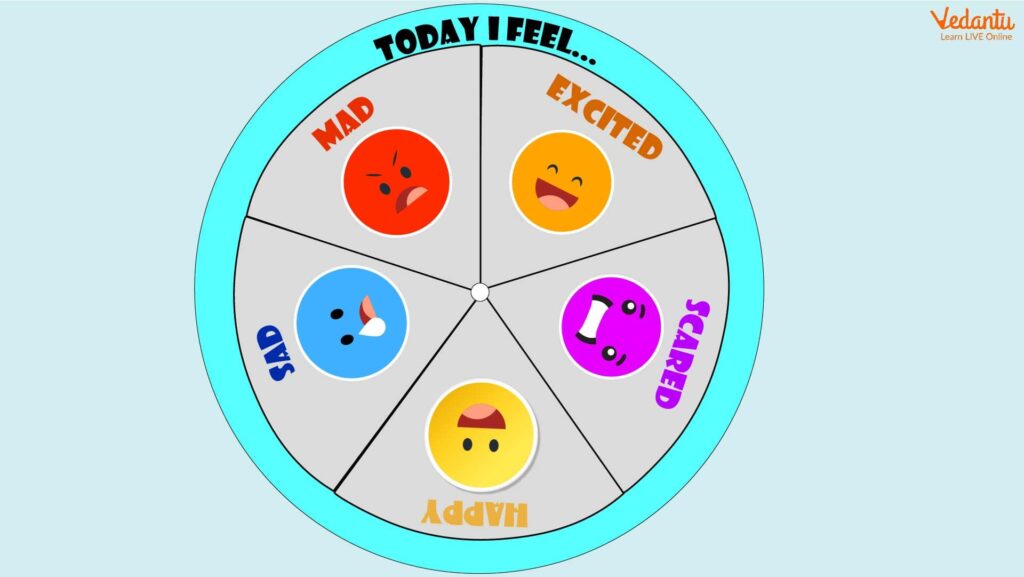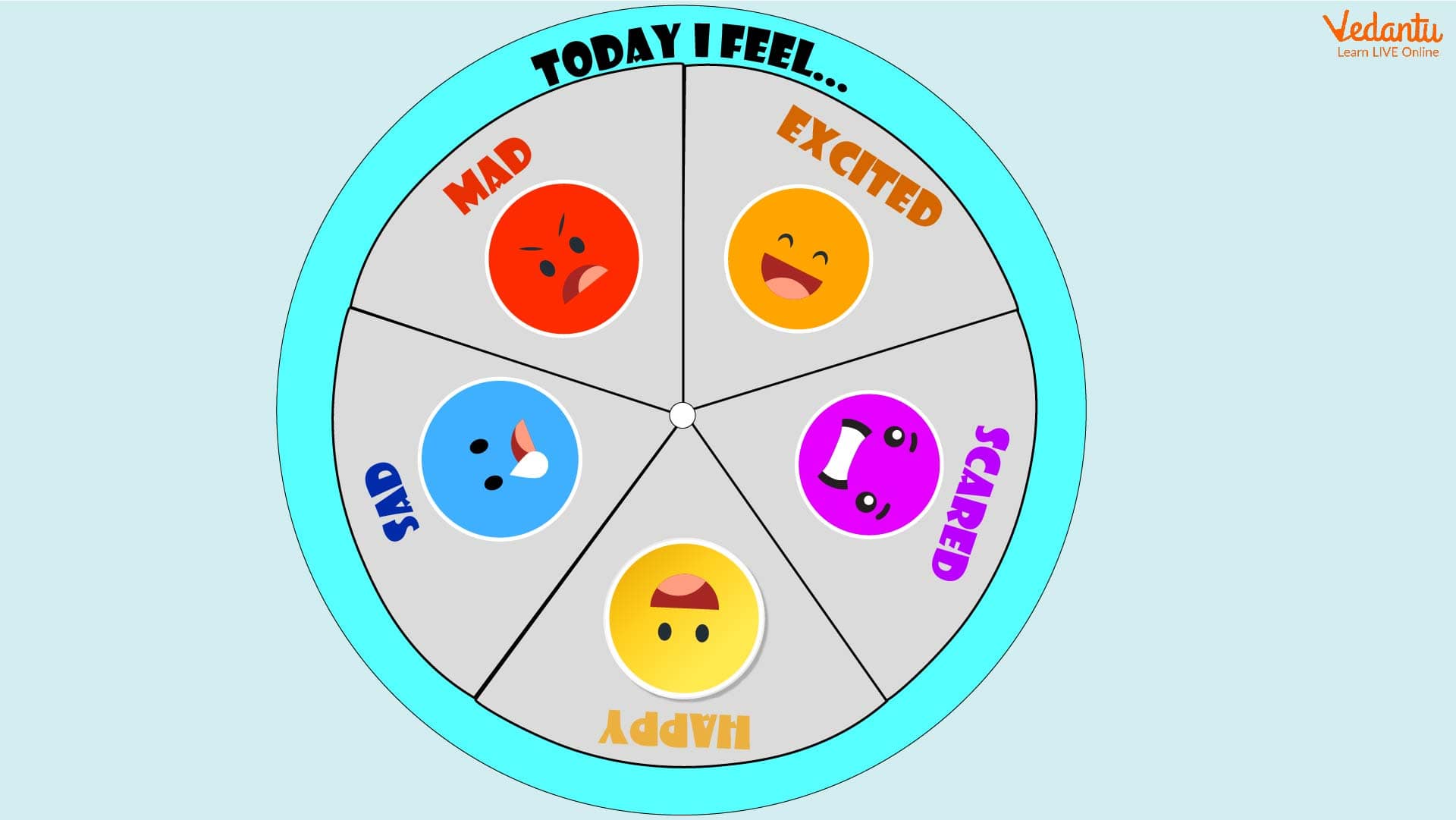
Unlocking Emotions: A Comprehensive Guide to the Emotional Wheel
Understanding and articulating emotions can be a challenging endeavor. Often, individuals struggle to pinpoint exactly what they are feeling, leading to miscommunication, internal conflict, and difficulty in managing emotional responses. Enter the emotional wheel, a visual tool designed to help identify and categorize feelings. This article delves into the intricacies of the emotional wheel, exploring its origins, how it works, and its practical applications in various aspects of life. We’ll explore how this simple yet powerful tool can unlock a deeper understanding of your emotional landscape and improve your emotional intelligence.
What is the Emotional Wheel?
The emotional wheel, also known as the feelings wheel, is a circular diagram that organizes emotions into different categories and subcategories. Typically, it features a core set of primary emotions at the center, branching out into more nuanced and specific feelings as you move outward. This structure allows users to navigate a spectrum of emotions, refining their understanding of what they are experiencing.
One of the most widely recognized versions of the emotional wheel was created by Dr. Gloria Willcox in the 1980s. Her model places six core emotions—joy, sadness, fear, anger, disgust, and surprise—at the center. These primary emotions then radiate outward into secondary and tertiary emotions, offering a more granular view of the emotional experience. Other versions may exist, but the core concept remains consistent: providing a visual aid for identifying and understanding emotions.
The History and Evolution of the Emotional Wheel
The concept of categorizing emotions has existed for centuries, with philosophers and psychologists attempting to map the human emotional landscape. However, the modern emotional wheel, as we know it, gained prominence in the late 20th century. Dr. Willcox’s work was instrumental in popularizing the tool, but its roots can be traced back to earlier research on emotion theory.
Since its inception, the emotional wheel has evolved in various ways. Different versions have emerged, incorporating new emotions, cultural nuances, and technological advancements. For example, digital versions of the wheel often include interactive features and personalized recommendations. The underlying purpose remains the same: to facilitate emotional awareness and communication.
How the Emotional Wheel Works
The emotional wheel is designed to be intuitive and user-friendly. It typically consists of concentric circles, with the most basic emotions at the center. As you move outward, the emotions become more specific and complex. For example, the core emotion of ‘anger’ might branch out into feelings like ‘frustration,’ ‘irritation,’ ‘resentment,’ and ‘rage.’
Using the wheel involves a process of self-reflection and exploration. When you’re feeling an emotion, you start by identifying the primary emotion that resonates most closely with your experience. From there, you can explore the outer layers of the wheel to pinpoint the specific nuance of your feeling. This process can help you gain clarity and insight into your emotional state.
Benefits of Using the Emotional Wheel
The benefits of using the emotional wheel are numerous and far-reaching. Here are some key advantages:
- Improved Emotional Awareness: The wheel helps you identify and name your emotions, increasing your self-awareness.
- Enhanced Communication: By providing a common language for emotions, the wheel facilitates more effective communication with others.
- Better Emotional Regulation: Understanding your emotions is the first step towards managing them. The wheel can help you develop strategies for coping with difficult feelings.
- Increased Empathy: Recognizing the nuances of your own emotions can make you more empathetic to the feelings of others.
- Reduced Stress and Anxiety: By addressing underlying emotional issues, the wheel can contribute to a reduction in stress and anxiety levels.
Applications of the Emotional Wheel
The emotional wheel has a wide range of applications in various fields, including:
Therapy and Counseling
Therapists and counselors often use the emotional wheel as a tool to help clients explore their feelings. It can be particularly helpful for individuals who struggle to articulate their emotions or who have difficulty identifying the root causes of their emotional distress. By working with the wheel, clients can gain a deeper understanding of their emotional patterns and develop healthier coping mechanisms. [See also: Cognitive Behavioral Therapy Techniques]
Education
The emotional wheel can be a valuable resource in educational settings, particularly for teaching children and adolescents about emotional intelligence. It can help young people develop their emotional vocabulary, learn to recognize and manage their feelings, and improve their social skills. Educators can use the wheel in classroom discussions, role-playing activities, and individual counseling sessions.
Personal Development
Beyond professional settings, the emotional wheel can be a powerful tool for personal growth and self-discovery. Individuals can use it to track their emotional states, identify triggers, and develop strategies for managing their emotions. Whether you’re seeking to improve your relationships, reduce stress, or simply gain a better understanding of yourself, the emotional wheel can be a valuable resource.
Conflict Resolution
Understanding the emotions driving a conflict is crucial for effective resolution. The emotional wheel can help parties involved in a dispute identify their underlying feelings and communicate them more clearly. This can lead to more productive dialogue and a greater likelihood of finding a mutually agreeable solution. [See also: Effective Communication Strategies]
How to Use the Emotional Wheel Effectively
To maximize the benefits of the emotional wheel, consider these tips:
- Start with the Basics: Begin by focusing on the core emotions at the center of the wheel. Once you have a solid understanding of these basic feelings, you can move on to the more nuanced emotions in the outer layers.
- Be Honest with Yourself: The emotional wheel is only effective if you’re honest about your feelings. Resist the urge to downplay or suppress your emotions.
- Use it Regularly: The more you use the wheel, the better you’ll become at identifying and understanding your emotions. Make it a habit to check in with your feelings regularly.
- Combine it with Other Tools: The emotional wheel can be used in conjunction with other techniques for emotional regulation, such as mindfulness, journaling, and therapy.
- Customize it: Don’t be afraid to adapt the emotional wheel to fit your own needs. You can add or remove emotions, create your own categories, or develop a personalized version of the wheel.
Criticisms and Limitations of the Emotional Wheel
While the emotional wheel is a valuable tool, it’s important to acknowledge its limitations. Some critics argue that the wheel oversimplifies the complexity of human emotions, reducing them to a set of predefined categories. Others point out that the wheel may not be culturally universal, as different cultures may have different ways of categorizing and expressing emotions.
Additionally, the emotional wheel is a static tool, meaning it doesn’t account for the dynamic and ever-changing nature of emotions. Feelings can shift rapidly, and the wheel may not always capture the full spectrum of emotional experience.
Despite these limitations, the emotional wheel remains a useful resource for many people. By acknowledging its shortcomings and using it in conjunction with other tools and techniques, you can maximize its benefits and gain a deeper understanding of your emotional life.
The Emotional Wheel in the Digital Age
The rise of technology has brought about new and innovative ways to use the emotional wheel. Digital versions of the wheel are now readily available online, often with interactive features and personalized recommendations. These digital tools can make it easier to track your emotions, identify patterns, and connect with resources for emotional support. [See also: Mental Health Apps and Resources]
Moreover, social media platforms and online communities are increasingly using the emotional wheel as a way to promote emotional awareness and communication. Individuals can share their feelings using the wheel, connect with others who are experiencing similar emotions, and access a wealth of information and support. The digital age has made the emotional wheel more accessible and relevant than ever before.
Conclusion: Embracing the Power of the Emotional Wheel
The emotional wheel is a powerful tool for unlocking a deeper understanding of your emotions and improving your emotional intelligence. Whether you’re a therapist, educator, student, or simply someone seeking personal growth, the wheel can help you identify, articulate, and manage your feelings more effectively.
By embracing the power of the emotional wheel, you can gain greater self-awareness, improve your communication skills, and cultivate healthier relationships. So, take the time to explore the wheel, experiment with its various applications, and discover the transformative potential it holds for your emotional well-being. The emotional wheel is more than just a diagram; it’s a roadmap to a richer, more fulfilling emotional life. Using the emotional wheel consciously can truly change your perspective. The benefits of understanding the emotional wheel are clear. Remember to use the emotional wheel in combination with other tools. The power of the emotional wheel should not be underestimated. Understanding the emotional wheel helps in conflict resolution. The emotional wheel is a valuable resource. Learn to use the emotional wheel effectively. The emotional wheel is a tool for self-discovery. The digital age has enhanced the emotional wheel.

